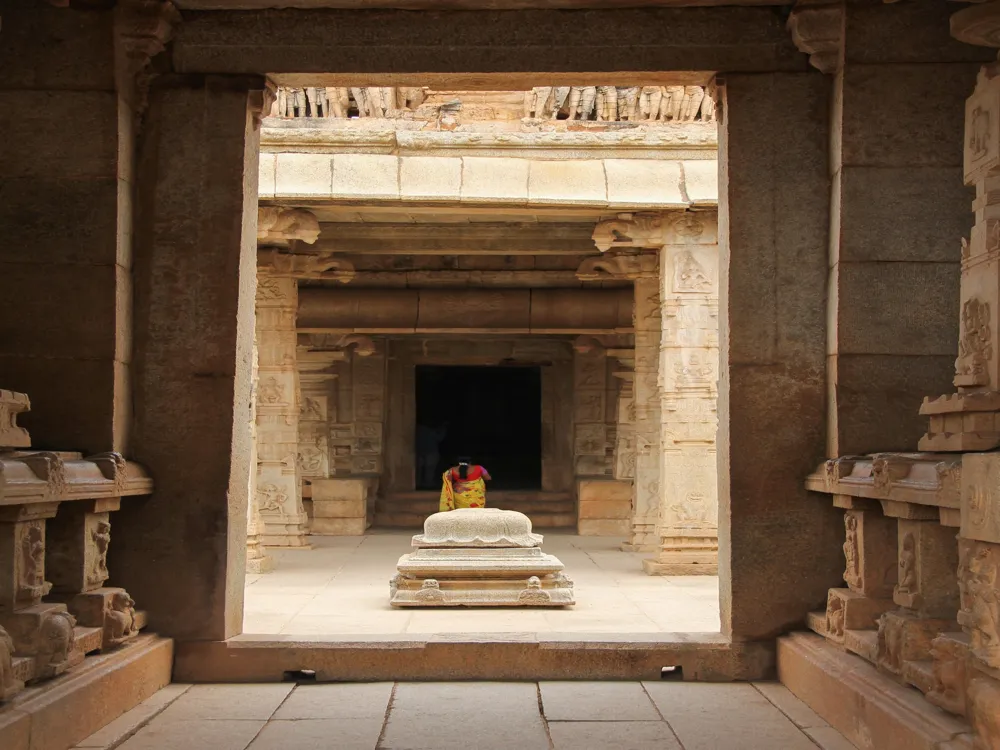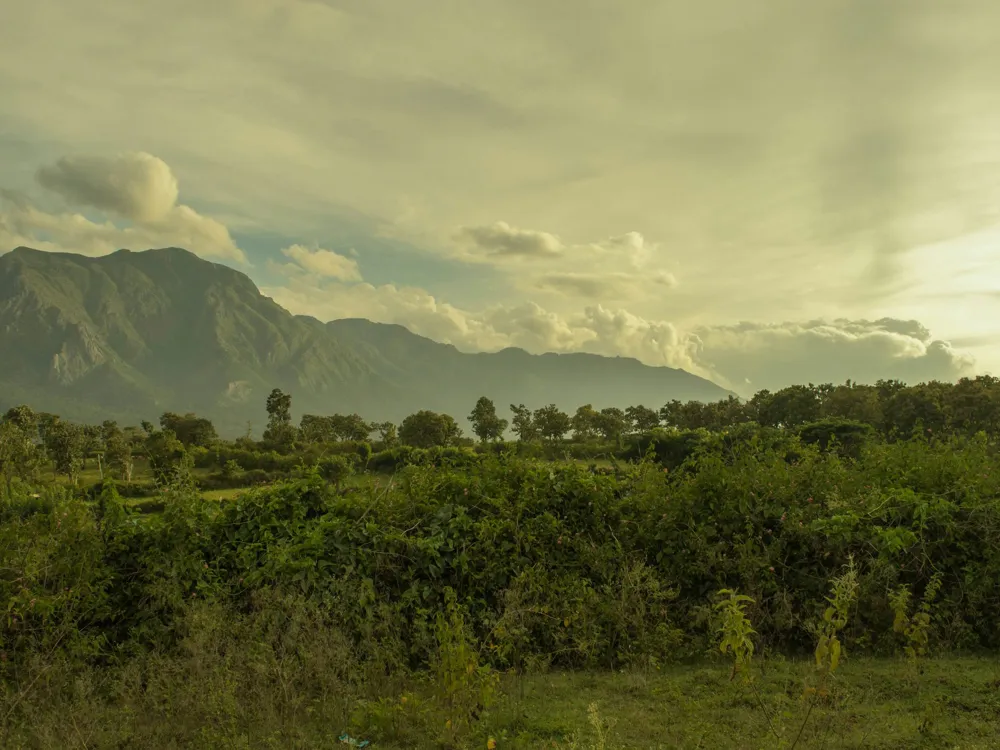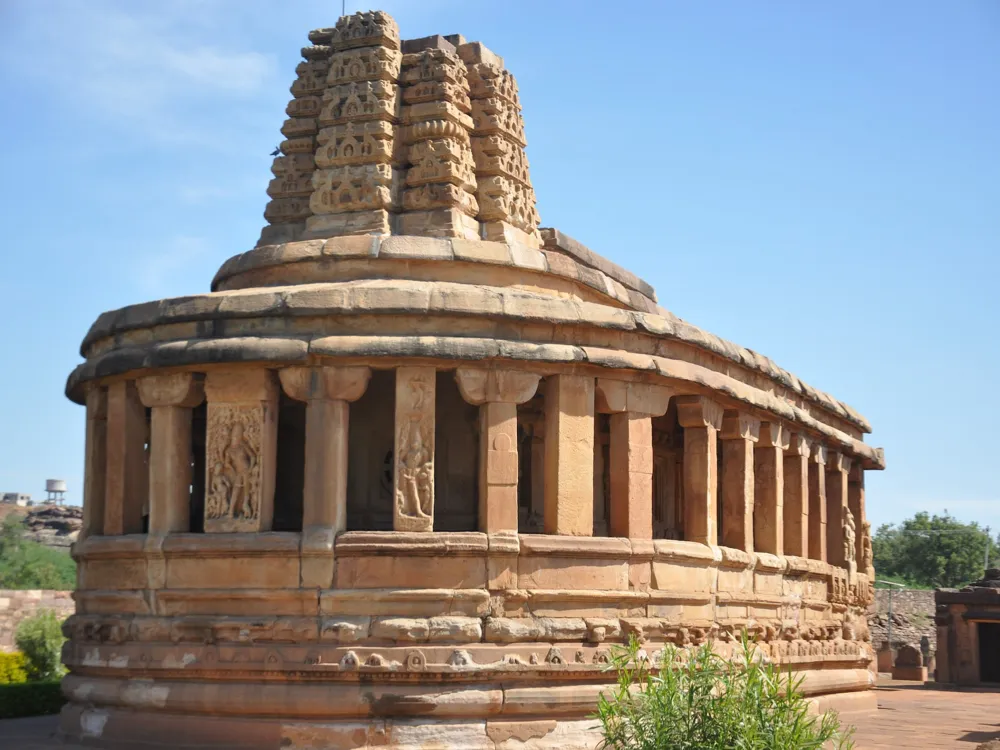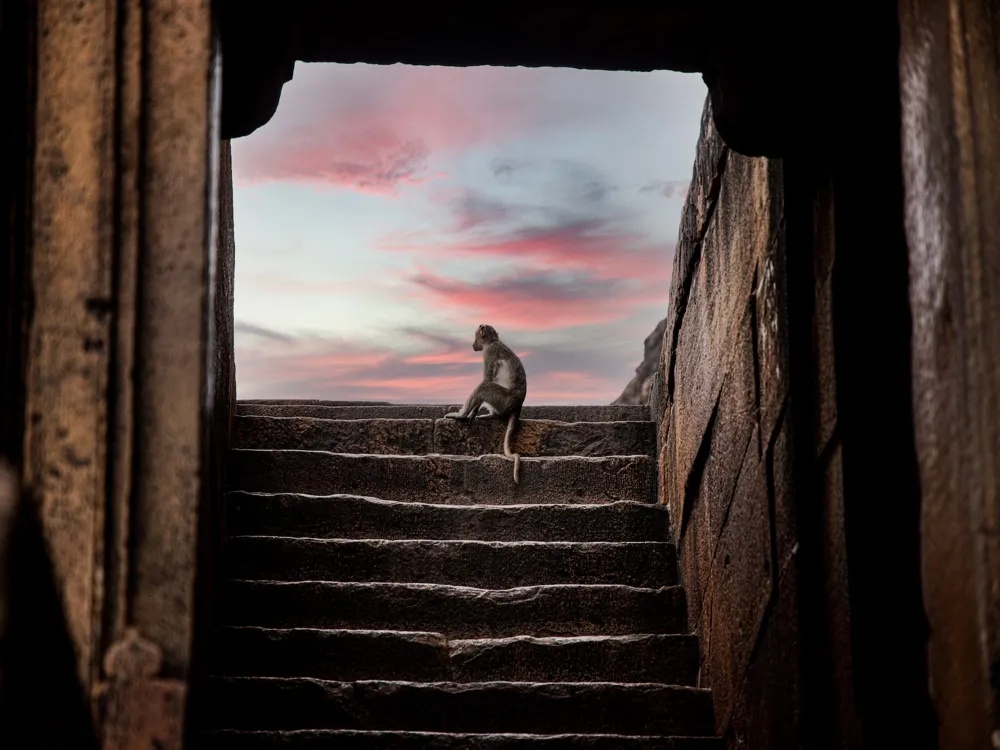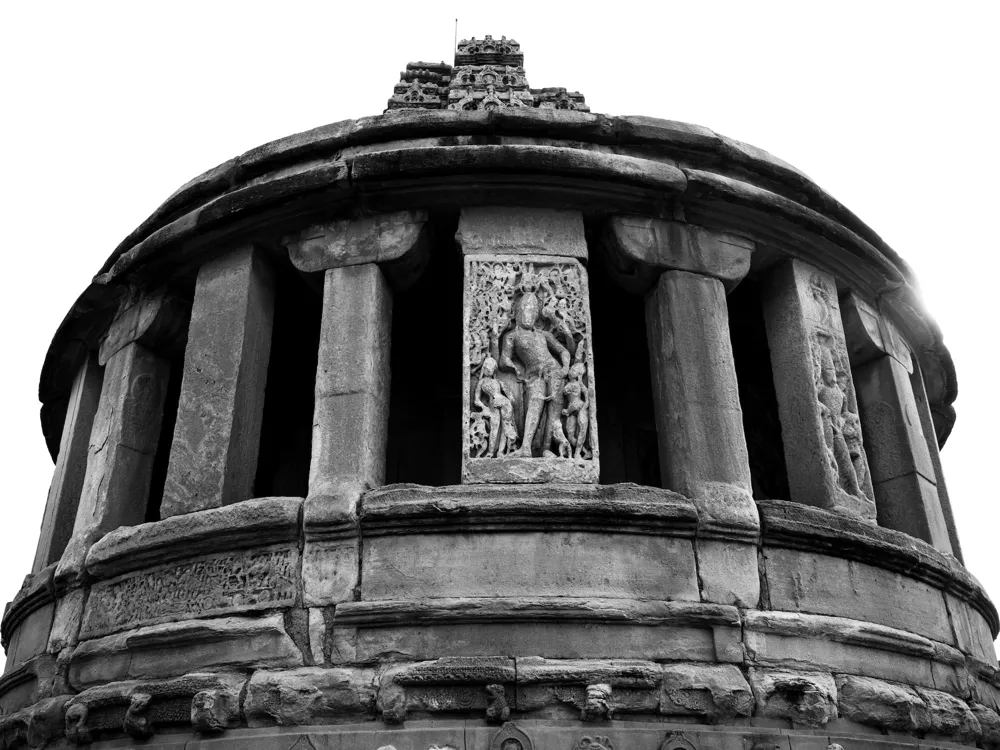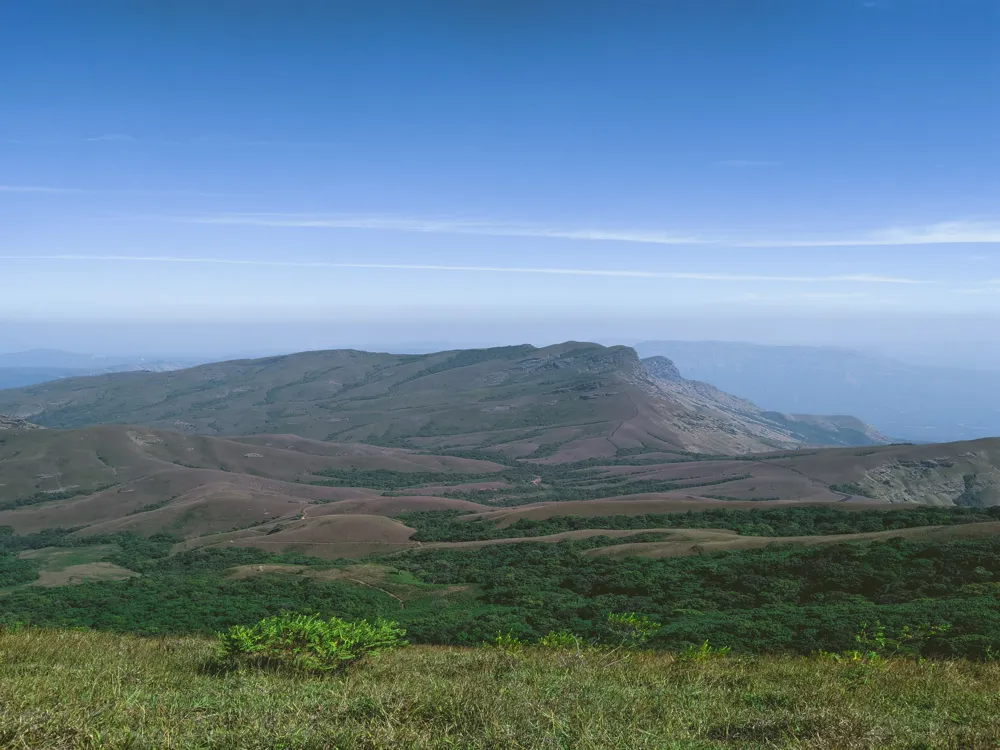Hampi, a UNESCO World Heritage Site, is an ancient village in the south Indian state of Karnataka. It's known for its significant historical heritage, nestled within the ruins of the city of Vijayanagara, the former capital of the Vijayanagara Empire. Predating the city's establishment in the 14th century, Hampi's history is a fascinating tapestry that weaves through time, showcasing a rich cultural and historical legacy. The landscape is dotted with numerous ruined temple complexes from the Vijayanagara Empire, standing as a testament to the architectural and cultural grandeur of the past. Visitors are often captivated by the surreal boulder-strewn landscape of Hampi, which offers a picturesque and ethereal backdrop to the ruins. The Tungabhadra River flows serenely through this rugged terrain, adding a sense of timeless beauty to the place. The history of Hampi is not just confined to its majestic structures and religious significance but also extends to its role in the Hindu epic, the Ramayana, where it is identified as the mythical monkey kingdom of Kishkindha. Hampi's rich tapestry is further embroidered with tales of power, conquest, and defeat. It was the heart of the Vijayanagara Empire, which reached the pinnacle of its power under rulers like Krishna Deva Raya. The empire was renowned for its patronage of art and architecture, attracting poets, scholars, and artisans from far and wide. However, the Battle of Talikota in 1565 marked the beginning of the end for this magnificent city, leading to its decline and eventual abandonment. Today, Hampi stands as a silent yet eloquent witness to the rise and fall of an empire, inviting visitors to wander through its ancient streets, exploring its rich history and cultural heritage. The architectural splendor of Hampi is a harmonious blend of innovation and tradition, making it a unique historical site. The Vijayanagara style, seen in Hampi's ruins, is a remarkable amalgamation of various architectural styles, including Dravidian, Indo-Islamic, and even Gothic influences. This fusion is reflective of the cosmopolitan nature of the Vijayanagara Empire, which embraced diverse cultural influences. The Virupaksha Temple, a prime example of Vijayanagara architecture, stands tall amidst the ruins, continuing to be a place of worship. It embodies the empire's architectural prowess, featuring intricately carved pillars, magnificent towers, and an awe-inspiring stone chariot. The temple complex, along with others like the Vittala Temple and the Hazara Rama Temple, showcases a profound understanding of geometry, symmetry, and sculptural art. One of the striking features of Hampi's architecture is the use of locally sourced materials. The builders employed granite, a readily available material in the region, shaping it into elaborate sculptures, pillars, and temple gopurams (towers). The intricate carvings on these structures depict scenes from Hindu mythology, social life, and dance forms, offering a window into the life and times of the Vijayanagara era. The urban planning of the ancient city is another aspect of Hampi's architectural brilliance. The city was strategically designed with well-defined sacred, urban, and royal centers. The sacred center houses temples and religious structures, the urban center includes markets and residential areas, while the royal center contains palaces, administrative buildings, and military structures. This segregation reflects a highly organized and sophisticated urban planning approach that was ahead of its time. The ideal time to visit Hampi is from October to February when the weather is pleasant. During this period, the temperature is cooler, making it comfortable to explore the vast expanse of the ruins. Opt for light, breathable clothing and comfortable footwear as you will be doing a lot of walking. Don’t forget to carry hats, sunglasses, and sunscreen to protect yourself from the sun. Auto-rickshaws and bicycles are the most convenient modes of transport within Hampi. They are easily available and offer an authentic way to explore the ruins and the surrounding areas. While visiting the religious sites, dress modestly and remove footwear before entering temples. Always show respect to the local customs and traditions. The climate can be hot and dry, so carry water bottles to stay hydrated. You can refill them at various points to avoid dehydration. Hampi is accessible by various modes of transportation, making it convenient for travelers. The nearest airport is in Hubli, about 144 kilometers away. There are also regular flights to Bangalore, which is approximately 350 kilometers from Hampi. For those preferring rail travel, Hospet is the nearest railway station, about 13 kilometers from Hampi. From Hospet, one can take a local bus, taxi, or auto-rickshaw to reach Hampi. Additionally, there are several bus services available from major cities like Bangalore and Hyderabad that directly connect to Hampi.Overview of Hampi, Karnataka
Architecture of Hampi
Tips When Visiting Hampi
Best Time to Visit
What to Wear
Local Transport
Respect Local Culture
Stay Hydrated
How To Reach Hampi
Hemakuta Hill Temple Complex
Hampi
Karnataka
NaN onwards
View hampi Packages
Hampi Travel Packages
View All Packages For Hampi
Top Hotel Collections for Hampi

Private Pool

Luxury Hotels

5-Star Hotels

Pet Friendly
Top Hotels Near Hampi
Other Top Ranking Places In Hampi
View All Places To Visit In hampi
View hampi Packages
Hampi Travel Packages
View All Packages For Hampi
Top Hotel Collections for Hampi

Private Pool

Luxury Hotels

5-Star Hotels

Pet Friendly








